Blog
Items filtered by date: July 2025
Corns on the Feet Are Small Bumps That Can Cause Big Discomfort
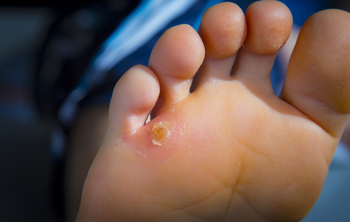
Corns are thickened areas of skin that develop on the feet due to repeated pressure or friction, often from tight shoes, high heels, or abnormal gait. They commonly form on the top and sides of toes or the soles of the feet. Corns may appear as hard, raised bumps surrounded by inflamed skin. They can feel rough to the touch and may cause tenderness or a burning sensation, especially when walking or wearing shoes. While over-the-counter remedies exist, improper removal can lead to infection or worsening symptoms. A podiatrist can safely remove corns, assess for underlying causes like misaligned toes or poor footwear, and recommend treatments such as custom orthotics, padding, or changes in footwear to prevent recurrence. If corns are interfering with your comfort or mobility, it is suggested that you make an appointment with a podiatrist.
If you have any concerns regarding your feet and ankles, contact Akena Wannamaker, DPM of ASW Foot and Ankle. Our doctor will treat your foot and ankle needs.
Corns: What Are They? and How Do You Get Rid of Them?
Corns can be described as areas of the skin that have thickened to the point of becoming painful or irritating. They are often layers and layers of the skin that have become dry and rough, and are normally smaller than calluses.
Ways to Prevent Corns
There are many ways to get rid of painful corns such as wearing:
- Well-fitting socks
- Comfortable shoes that are not tight around your foot
- Shoes that offer support
Treating Corns
Treatment of corns involves removing the dead skin that has built up in the specific area of the foot. Consult with Our doctor to determine the best treatment option for your case of corns.
If you have any questions, please feel free to contact our office located in Richmond, VA . We offer the newest diagnostic and treatment technologies for all your foot care needs.
Ingrown Toenails and How They Are Treated
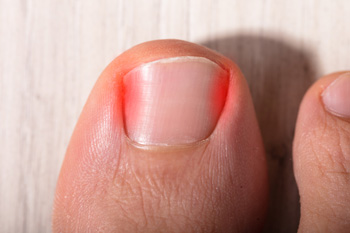
An ingrown toenail occurs when the edge of the nail grows into the nearby skin, often causing pain, redness, and sometimes drainage. It can be triggered by trimming nails too short, wearing tight shoes, or stubbing the toe. While anyone can develop this issue, it is more frequent in teens, athletes, and those with curved nails. Mild cases may respond well to warm saltwater soaks, clean bandaging, and changes in footwear. When symptoms worsen or infection sets in, a podiatrist might trim or remove the affected part of the nail. For ongoing problems, a simple in-office procedure can stop the edge of the nail from growing back. With proper care, recovery is quick and most patients return to regular activities without lasting effects. If you notice persistent toe pain, swelling, or visible changes in the nail, it is suggested that you visit a podiatrist for appropriate treatment.
Ingrown toenails can become painful if they are not treated properly. For more information about ingrown toenails, contact Akena Wannamaker, DPM of ASW Foot and Ankle. Our doctor can provide the care you need to keep you pain-free and on your feet.
Ingrown Toenails
Ingrown toenails occur when a toenail grows sideways into the bed of the nail, causing pain, swelling, and possibly infection.
Causes
- Bacterial infections
- Improper nail cutting such as cutting it too short or not straight across
- Trauma to the toe, such as stubbing, which causes the nail to grow back irregularly
- Ill-fitting shoes that bunch the toes too close together
- Genetic predisposition
Prevention
Because ingrown toenails are not something found outside of shoe-wearing cultures, going barefoot as often as possible will decrease the likeliness of developing ingrown toenails. Wearing proper fitting shoes and using proper cutting techniques will also help decrease your risk of developing ingrown toenails.
Treatment
Ingrown toenails are a very treatable foot condition. In minor cases, soaking the affected area in salt or antibacterial soaps will not only help with the ingrown nail itself, but also help prevent any infections from occurring. In more severe cases, surgery is an option. In either case, speaking to your podiatrist about this condition will help you get a better understanding of specific treatment options that are right for you.
If you have any questions, please feel free to contact our office located in Richmond, VA . We offer the newest diagnostic and treatment technologies for all your foot care needs.
See Your Foot Specialist Regularly If You Work On Your Feet
Understanding Fungal Infections of the Toenail
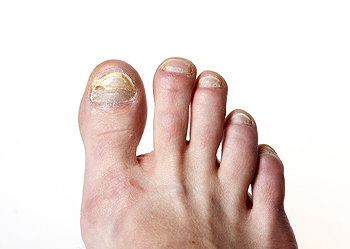
A fungal toenail infection can begin as a small white or yellow spot and slowly spread deeper into the nail. Over time, the nail may become thick, brittle, discolored, or start to lift from the nail bed. These infections often develop in warm, damp environments and are more common in people who wear tight shoes, walk barefoot in public places, or have a history of athlete’s foot. Poor circulation or a weakened immune system may also increase risk. While the condition is usually not painful early on, it can lead to discomfort or difficulty trimming the nail, if left untreated. More persistent infections often require prescription treatment or professional care. If your toenails are showing signs of thickening, crumbling, or discoloration, it is suggested that you see a podiatrist for proper diagnosis and appropriate treatment.
For more information about treatment, contact Akena Wannamaker, DPM of ASW Foot and Ankle. Our doctor can provide the care you need to keep you pain-free and on your feet.
Toenail Fungus Treatment
Toenail fungus is a condition that affects many people and can be especially hard to get rid of. Fortunately, there are several methods to go about treating and avoiding it.
Antifungals & Deterrence
Oral antifungal medicine has been shown to be effective in many cases. It is important to consult with a podiatrist to determine the proper regiment for you, or potentially explore other options.
Applying foot powder on the feet and shoes helps keep the feet free of moisture and sweat.
Sandals or open toed shoes – Wearing these will allow air movement and help keep feet dry. They also expose your feet to light, which fungus cannot tolerate. Socks with moisture wicking material also help as well.
If you have any questions please contact our office located in Richmond, VA . We offer the newest diagnostic and treatment technologies for all your foot and ankle needs.
Why Diabetic Foot Care Matters
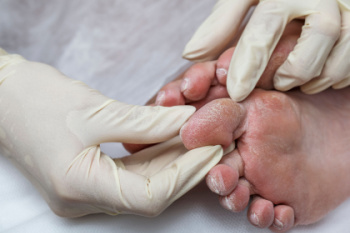
Taking care of the feet is especially important for individuals living with diabetes. High blood sugar over time can damage nerves and reduce blood flow, making it harder to feel injuries and for wounds to heal. A small cut or blister can turn into a serious infection, if left unnoticed. Dry skin, thick nails, and poor circulation can also contribute to foot problems that may not be immediately painful. Checking the feet every day for changes in color, swelling, or sores can help catch problems early. Wearing well-fitting shoes and keeping the skin clean and moisturized are simple steps that make a big difference. Regular foot exams by a podiatrist can also help prevent more serious complications. If you have diabetes and notice any signs of irritation, numbness, or changes in the skin of the feet or nails, it is suggested that you see a podiatrist for a diagnosis and appropriate treatment.
Diabetic foot care is important in preventing foot ailments such as ulcers. If you are suffering from diabetes or have any other concerns about your feet, contact Akena Wannamaker, DPM from ASW Foot and Ankle. Our doctor can provide the care you need to keep you pain-free and on your feet.
Diabetic Foot Care
Diabetes affects millions of people every year. The condition can damage blood vessels in many parts of the body, especially the feet. Because of this, taking care of your feet is essential if you have diabetes, and having a podiatrist help monitor your foot health is highly recommended.
The Importance of Caring for Your Feet
- Routinely inspect your feet for bruises or sores.
- Wear socks that fit your feet comfortably.
- Wear comfortable shoes that provide adequate support.
Patients with diabetes should have their doctor monitor their blood levels, as blood sugar levels play such a huge role in diabetic care. Monitoring these levels on a regular basis is highly advised.
It is always best to inform your healthcare professional of any concerns you may have regarding your feet, especially for diabetic patients. Early treatment and routine foot examinations are keys to maintaining proper health, especially because severe complications can arise if proper treatment is not applied.
If you have any questions, please feel free to contact our office located in Richmond, VA . We offer the newest diagnostic and treatment technologies for all your foot care needs.
What You Need to Know About Bunion Removal
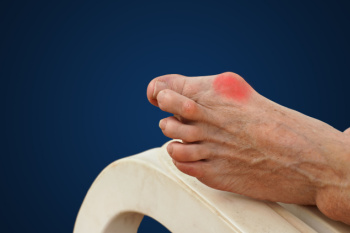
A bunion is a bony bump that forms at the base of the big toe, often caused by genetics, arthritis, or wearing tight shoes. Symptoms include pain, swelling, redness, and difficulty wearing shoes due to the toe’s misalignment. When conservative treatments like orthotics, padding, or shoe modifications fail to relieve pain, bunion removal surgery may be recommended. This procedure realigns the toe, removes the bony bump, and corrects deformities. While bunion removal can greatly improve comfort and foot function, it carries risks such as infection, nerve damage, stiffness, or recurrence of the bunion. Recovery typically involves rest, limited weight-bearing, and targeted exercises. A podiatrist can diagnose bunions through a physical exam and X-rays, helping determine if surgery is necessary and guiding you through treatment options. If you have a painful bunion, it is suggested that you schedule an appointment with a podiatrist for an evaluation and appropriate treatment.
Foot surgery is sometimes necessary to treat a foot ailment. To learn more, contact Akena Wannamaker, DPM of ASW Foot and Ankle. Our doctor will assist you with all of your foot and ankle needs.
When Is Surgery Necessary?
Foot and ankle surgery is generally reserved for cases in which less invasive, conservative procedures have failed to alleviate the problem. Some of the cases in which surgery may be necessary include:
- Removing foot deformities like bunions and bone spurs
- Severe arthritis that has caused bone issues
- Cosmetic reconstruction
What Types of Surgery Are There?
The type of surgery you receive will depend on the nature of the problem you have. Some of the possible surgeries include:
- Bunionectomy for painful bunions
- Surgical fusion for realignment of bones
- Neuropathy decompression surgery to treat nerve damage
Benefits of Surgery
Although surgery is usually a last resort, it can provide more complete pain relief compared to non-surgical methods and may allow you to finally resume full activity.
Surgical techniques have also become increasingly sophisticated. Techniques like endoscopic surgery allow for smaller incisions and faster recovery times.
If you have any questions, please feel free to contact our office located in Richmond, VA . We offer the newest diagnostic and treatment technologies for all your foot care needs.

